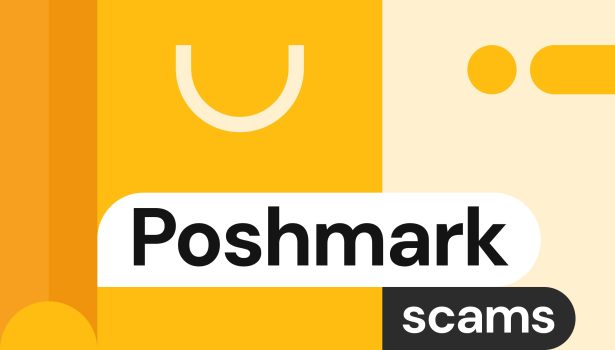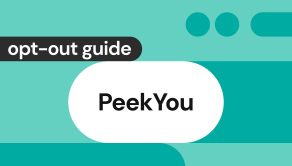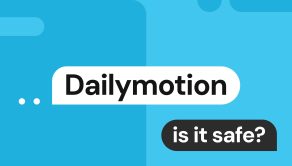Poshmark scams: how buyers and sellers can stay safe

It’s a bummer when you’re looking to make a bargain but instead get scammed. This is exactly what can happen to you on Poshmark. This wildly popular and generally safe social e-commerce site for selling and buying new and secondhand items also happens to attract scammer crowds in addition to legitimate users.
Let’s review the most common scam traps that target both buyers and sellers, how to spot signs of an oncoming scam, and how to stay protected in the aftermath.
Spoiler: stay vigilant and educate yourself on phishing messages to avoid 99% of Poshmark scams.
Why Poshmark attracts scammers
Founded in 2011 in the U.S., Poshmark has grown to become one of the largest international social resale platforms, specializing in clothes, beauty products, accessories, homeware and electronics. It has expanded to Canada, Australia and India and gained over 80 million users since then.
The platform’s popularity, ease of use and low verification requirements naturally attract scammers both on the selling and buying sides. Some of the reasons why you should beware of fraudulent users on Poshmark are these:
- With millions of users, it’s easy for scammers to blend in with their fake accounts or impersonate real users.
- High transaction volumes make it impossible to monitor the legitimacy of each, but Poshmark offers buyer protection and works to educate their users on how to spot scams.
- First-time buyers and sellers, who might not yet be familiar with the marketplace, are easier targets.
- Creating a Poshmark account is free and requires minimal verification. Scammers can create multiple fake profiles or re-register after being banned.
- Listing an item is easy and requires no upfront authentication unless it’s a luxury item worth $500 or more. Poshmark itself proudly says that you can “list in less than 60 seconds”.
All of this makes Poshmark a minefield for new users or those who aren’t vigilant enough to spot something fishy. While Poshmark does offer support materials and its Posh Protect and Posh Authenticate protection, it still takes hyper-awareness and proactiveness from users to stay safe.
Seller scams on Poshmark & how to avoid them
Scammers target sellers on Poshmark by pretending to be buyers and then using their malicious tactics to take you off the platform, harvest your sensitive personal information, or file issues with their purchase and initiate refunds for no valid reason.
Fake buyers asking to take it off-platform
Asking to take communication off the platform is how the most typical Poshmark scams for sellers start.
A scammer pretends to be a buyer and asks you to email or text them instead—to share better-quality images of the item, negotiate the deal or get a faster or fee-free payment if you switch to off-platform payment systems (like Venmo).
If you comply, you’ll likely get a message with a phishing link to collect your Poshmark account credentials, credit card data or other personal information they can exploit. This way, scammers successfully bypass Poshmark’s protections and make it harder for you to appeal to Poshmark’s support as they don’t cover anything happening outside the platform.
How to avoid this scam: Never go off Poshmark to communicate with a buyer, send images or accept payments via any other system. This request is a prime sign of fraudulent intent. Poshmark states explicitly in their Community Guidelines that taking transactions off the platform is not allowed.
Phishing and impersonation scams via comments
In this variation of the off-platform request, a scammer will again pose as a potential buyer commenting on your listing and offering to email them for a better offer.
In a more inventive version of Poshmark scam comments, fraudsters may impersonate Poshmark’s support service alerting you to a problem with the item or your account. These messages contain phishing links designed to collect your credentials or credit card data.
Scammers can try to make you believe they have trouble paying for your listed item and even attach screenshots of their communication with “Poshmark support”. This is to make you click on the phishing link in your email they sent you to “verify your account” or for other convincing reasons.
How to avoid this scam: Know that Poshmark never asks you to confirm a transaction or verify your account via external links. Always double-check the links sent from buyers. Pay extra attention to comments that sound robotic and contain weird-looking email addresses from unknown domains. If you find the message suspicious, flag it immediately.
Chargebacks and fraudulent refund claims
Poshmark scams for sellers can happen even when a payment goes through. Fraudulent buyers can submit a claim that the item was not received, is incorrect, not as described or missing in a bundle order. If they manage to prove this to Poshmark Support and their refund is approved, they may ship back the wrong item (for example, a counterfeit version of a legit luxury bag) to keep the original one to themselves.
Buyers can also initiate a chargeback with their bank or credit card company stating that the transaction was not authorized. In this case, you may lose both the money and the item you shipped.
How to avoid this scam: Always ship using Poshmark’s prepaid shipping labels and keep the tracking number. Take photos of the item(s) right before shipping and record your packaging process on video with timestamps as visual proof in case there’s a dispute.
Poshmark buyer scams & how to avoid them
On Poshmark, buyers can be exposed to scammers who use urgency, hefty discounts, replicas of popular goods and stolen images as their tactics. If you ever suspect a listed item to be fake, counterfeit or overall untrustworthy, report this item.
Fake listings with urgent discounts
Scammers may list counterfeit items on Poshmark pretending they’re luxury originals sold at enormous discounts to make unaware buyers grab them without looking. These scammers can also pressure you into buying through offers that are “limited time only” or available “only today”. In return, you’ll get a fake item or nothing at all.
How to avoid this scam: If an item is sold below $500, it’s not eligible for the Posh Authenticate protection and thus you have no way to ensure the item’s authenticity before you receive it. Be wary of listings that scream urgency to pressure you into buying, and research the item, the seller’s reviews and similar offers before committing.
Never shipped items or swapped goods
Scammers can attract you with a flashy listing, wait until you buy, and then send you a fake tracking number, start avoiding communication, or disappear completely. Or when they do send you the item, they swap it with a cheaper, completely different version from what you ordered.
While you can still dispute this order and get a refund under the Posh Protect program, it’s still a frustrating experience that leaves you without the item you were after.
How to avoid this scam: Sometimes there’s simply no way to predict Poshmark buyer scams. If you do run into the case of items never shipped, counterfeit, or swapped, you can report a problem within 3 days of delivery. The seller will only receive their money if this 3-day window passes and there is no reported problem. Always inspect items upon delivery and report issues immediately to leave no chance for scammers to profit from it.
Unauthorized or stolen images
Some scammers use images stolen from brands, other stores and platforms, hoping that you would fall for pretty photos of a desired item. In this case, the item listed can turn out to be counterfeit, in a bad condition, or even non-existent.
Sellers must use original images that correctly represent listed items. To avoid misleading buyers, descriptions should clearly state an item’s condition and characteristics. Some fake sellers use vague descriptions as their tactic to make disputing the order later more difficult for you.
How to avoid this scam: Take note if you see watermarks or logos from other sites on the listing images, there are no photos of the item in real-life settings, descriptions are deliberately vague, and the seller refuses to provide additional photos or details of the item. These are red flags signaling that the item may be counterfeit or not exist at all.
How to spot legitimate buyers on Poshmark
How can you tell if a Poshmark buyer is legit? There’s no foolproof way to spot legitimate buyers on Poshmark, but with some practice you can learn to recognize real people with a real intent to buy:
- They’re fine with staying in the app from start to finish, with no requests to move to another platform or messenger.
- They ask relevant questions showing their interest in the item, like size, fabric, and provenance.
- They have complete profiles with their profile picture, history of completed sales or purchases, reviews from other users and those that they’ve given to other sellers.
- When they negotiate the price, it’s still within reasonable limits (no more than 30% off the initial price).
- They don’t rush the sale or make generic comments like “Interested, email me ASAP”.
- They don’t pressure you into using different payment methods (like Venmo, Zelle, or PayPal) for “fee-free” payment or a better deal.
- They don’t ask you to ship to a different address than the one connected to their profile, or ship using a different service, not the one authorized by Poshmark.
- They don’t send you links to third-party websites.
It’s up to you to respond politely or to block a suspicious user right away, but in any case don’t submit to their requests or click any links in comments.
How to spot legitimate sellers on Poshmark
Poshmark can be a great place to shop at a bargain when you learn to recognize legitimate sellers. After all, many sellers make six-figure incomes from their business on Poshmark, so you’re bound to find those you can trust.
Look out for the following signs of a trusted seller:
- They don’t pressure you to take communication off the platform with messages like “email me for more photos” or “let’s take it to Instagram” to bypass Poshmark protections.
- They put reasonable price tags on items. Too low a price for a luxury item is almost always a sign of a fake.
- They have reviews (“Love Notes”) from other buyers in the profile, along with a history of past sales.
- They have high ratings of 4.5 and above.
- They fill in the profile with useful information, such as their return policy or shipping expectations.
- They organize their closet consistently, with a similar style for all photos clearly taken by them, not copied from elsewhere.
- They have a history of activity on Poshmark, such as shares and follows.
- They showcase a clear intention to sell the item, not to get your personal details.
- If you shop for items worth $500 and more, some sellers’ items are pre-authenticated by Posh Authenticate. This acts as an extra trust layer for buyers.
All in all, look out for consistent behavior, transparent communication that raises no concerns on your side, and a history of sales and interactions on Poshmark.
How Poshmark protects users from scams
Poshmark has two distinct buyer protection policies—Posh Protect and Posh Authenticate. These policies only apply to items purchased through the platform. You can only conduct any transactions outside of Poshmark at your own risk.
Posh Protect
Posh Protect is Poshmark’s umbrella buyer protection program that covers every purchase. Under this protection, you’re covered in case the item you bought is:
- Damaged
- Incorrect
- Missing
- Not as described
- Not authentic
The money you’ve paid for the item won’t be released to the seller until you confirm that the item is as described. But if your purchase falls within any of the categories above, you can file a dispute within 3 days of the delivery date. If the dispute is resolved in your favor, Poshmark will assist you with returning the item to the seller (if applicable) and you’ll get a refund.
If you don’t take any action within this 3-day timeframe, Poshmark will consider it a confirmation of your satisfaction with the received item, and no further claims will be accepted after that time.
For sellers, Posh Protect means that if a dispute is resolved in the buyer’s favor, the item will be returned at no cost but the seller won’t be paid. However, Poshmark can’t guarantee that the returned item will be the same and in the same condition as shipped. If there’s any issue with the returned item, sellers should report it separately.
Posh Authenticate
For items worth $500 or more, Poshmark offers a free authentication service before they’re shipped to confirm that these luxury items are indeed originals. This service is carried out at Poshmark’s headquarters by their experts. If the item’s authenticity can’t be verified, the buyer is refunded.
Some items that come from trusted suppliers and resellers are pre-authenticated, which is a mark of Poshmark’s approval of the quality of their items.
Posh Authenticate is a subset of the broader Posh Protect program that covers every single purchase no matter the price. So when you purchase a luxury item, Posh Protect automatically covers it as well.
What to do if you are scammed on Poshmark
Poshmark offers a few ways to report a scam—either by reporting an issue or contacting their support directly. If your case is successful, Poshmark will refund you. If you want to initiate a transaction chargeback for fraud-related reasons, you should contact your bank or credit card company. Poshmark will not be able to assist you if the transaction happened outside the platform.
Report an issue with the order
If your received order is not as described or there’s any other issue meeting the Posh Protect conditions, you may be eligible for a refund. You will have 3 days to report an issue:
- Open the app and select the relevant order in My Purchases.
- Select Problems/Order Inquiry and the item return reason, such as Item Not as Described.
- Provide any supporting information, such as photos of the item proving the return reason.
- Click Submit and wait for the Poshmark support to sort out the issue.
In turn, the seller will need to provide any proof of the item quality before shipment, tracking numbers and shipping receipts. Poshmark will then consider the evidence and either approve or deny the return.
If a seller has a problem with the returned item, they can file a claim by clicking Problem with Return on their Orders page.
Report a scam to Poshmark support
You can only report a scam that happened on the Poshmark platform. If you’ve taken your communication elsewhere and you fall victim to phishing via email or a spoof website, Poshmark will not be able to help you.
But if you ran into a scammer on Poshmark, you can do the following:
- First, report the user or the listing so it’s taken down from Poshmark and won’t harm other users. For this, click on the … menu, select the report reason and submit.
- For immediate action, contact Poshmark Support directly, either via the app or on their website.
- When contacting support, provide any helpful information such as the users involved, the title of the listing in question, screenshots of your communication and item photos.
How to safeguard yourself after a Poshmark scam
When the damage is done, the best thing you can do is to prevent it from happening again. Hopefully your case has been resolved, but it still helps to stick to these practices to protect yourself from scams on Poshmark and elsewhere going forward:
- Secure your Poshmark account by changing the password and enabling two-factor authentication (2FA).
- Toggle off your Poshmark profile’s search visibility in your Account Settings > Sharing Settings.
- Check your account for any unusual activities such as listings or messages you don’t recognize.
- If the scam involved off-platform communication, change your email password and enable 2FA.
- Monitor your financial accounts for unusual activities. If you suspect your credit card data has been compromised, contact your bank or card issuing company.
- Use Onerep to scan the web for your exposed personal information. Scammers can use your details found on data broker sites to impersonate you and create targeted phishing attacks. Removing your data from the internet minimizes your risks of falling victim to scams.
For more tips on safe shopping and selling on Poshmark, browse their collection of support guides.
FAQ
How do I know if a Poshmark comment is a scam?
Watch out for Poshmark scam comments asking you to communicate via email or text, copy and paste an unknown link, or those using vague, generic messages or impersonating Poshmark Support. Scam comments also typically contain grammatical errors, weird placement of punctuation and emojis, and uppercase letters.
What should I do if a Poshmark buyer asks for my number?
Never share sensitive personal information with Poshmark users. Off-platform contacts are not protected under Poshmark Protect, and you run the risk of exposing yourself to more scam attempts.
How do scammers trick sellers on Poshmark?
Scammers may request off-platform communication to avoid Poshmark security controls, file false return claims, or trick you into clicking on a phishing link in a comment on your listing. Beware of these tactics and never take your interaction with buyers off Poshmark.
Can I get a refund if I was scammed on Poshmark?
Yes, you can get a refund in the case of Poshmark buyer scams if you report an issue with your order and Poshmark Support verifies it. Their Posh Protect program only covers transactions carried out through the platform, so never take it outside Poshmark.
Is Poshmark a safe place to buy designer items?
Yes, Poshmark is generally a safe place to shop for new and secondhand designer items. However, like with any social ecommerce platform, it’s rife with scammers both on the selling and buying sides, so stay vigilant and always check the seller’s profile and history of past sales.





Dimitri is a tech entrepreneur and founder of Onerep, the first fully automated data removal service. Top cybersecurity CEO of 2021 by The Software Report.